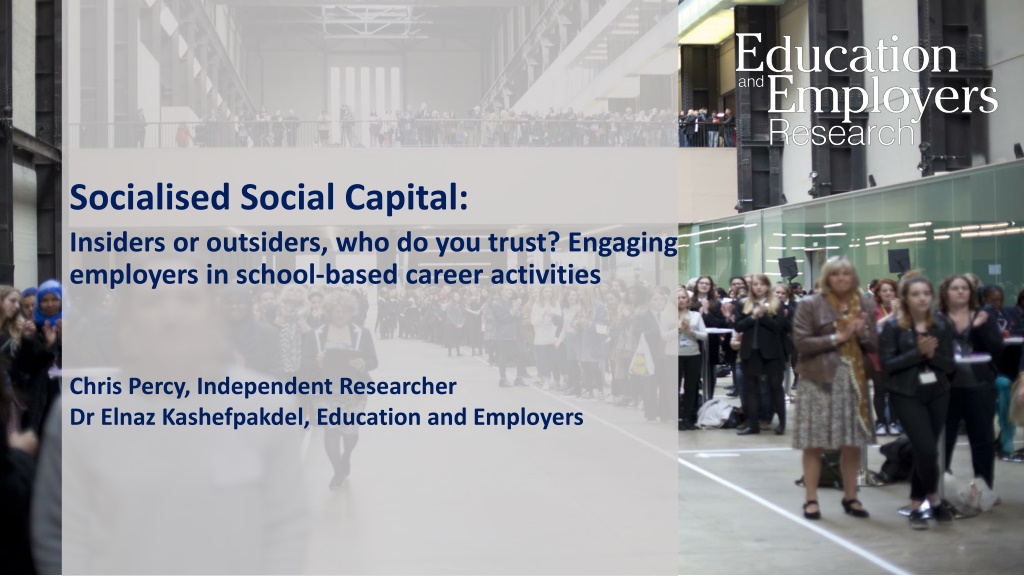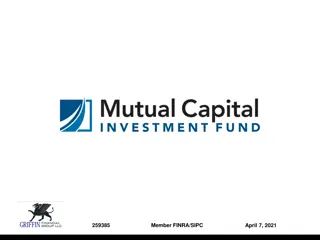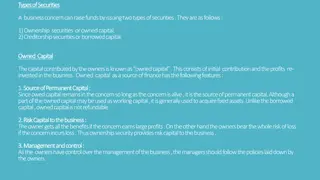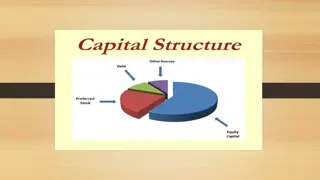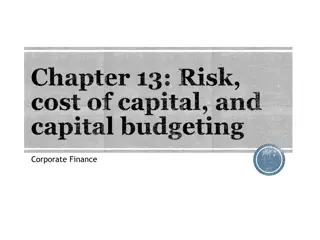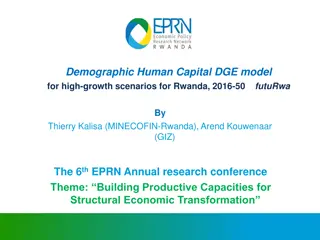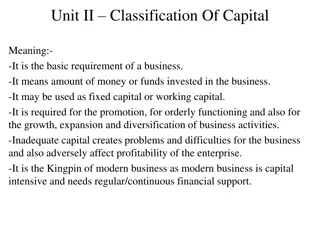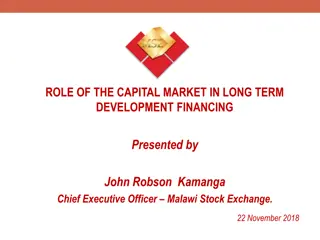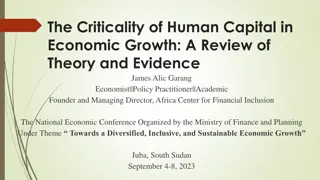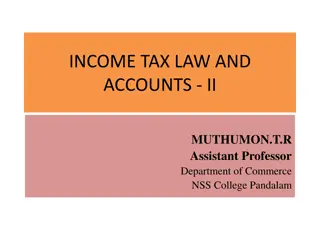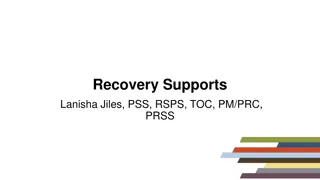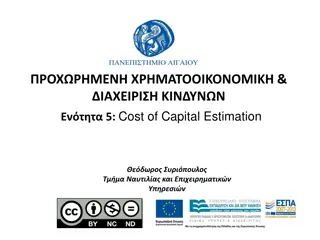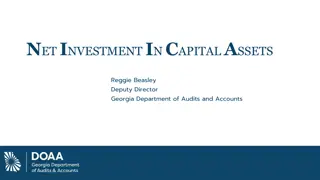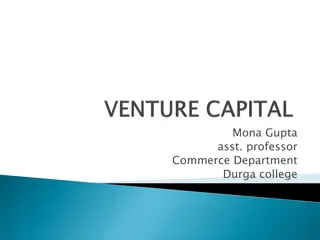Socialised Social Capital:
Social capital in career activities, bridging relationships, and the impact of insider vs outsider involvement. Can schools compensate for social capital differences through targeted activities? Delve into the complexities of social connections for young people in the labor market.
Download Presentation

Please find below an Image/Link to download the presentation.
The content on the website is provided AS IS for your information and personal use only. It may not be sold, licensed, or shared on other websites without obtaining consent from the author. Download presentation by click this link. If you encounter any issues during the download, it is possible that the publisher has removed the file from their server.
E N D
Presentation Transcript
Socialised Social Capital: Insiders or outsiders, who do you trust? Engaging employers in school-based career activities Chris Percy, Independent Researcher Dr Elnaz Kashefpakdel, Education and Employers
Testimony that inspired the work [I] trusted the word of someone in the working world [as opposed] to a careers advisor or teacher telling you what to do. 23-year-old mixed-race man, in full-time employment, reflecting in a 2011 YouGov survey on his rich experiences of employer engagement in his independent school education
What do we mean by social capital? Complex and contested term: relationships with individuals and groups that can convey benefits can cover bonding, bridging and linking social capital typically thought of as strong ties , but weak ties also matter important because we are all born with and accrue different levels of social capital forms of capital (e.g. social, cultural, human, financial etc.) are partially fungible and fuzzy at the edges Here: Focus on bridging/linking social capital between individuals with different socio-economic experiences and across different hierarchies Specifically the extent to which young people have access to older people who can support them in the labour market, taking a broad view of social capital e.g. through sharing information about the world of work or specific jobs, making introductions, providing opportunities for work experience, formal/informal mentoring,
The research questions 1. Can schools make up for young people s differences in real social capital via careers activities to create proxy social capital ? e.g. can you provide some of the same benefits without necessarily the same underpinning social relationships 2. Can schools achieve this better by using insiders (e.g. school or education- sector staff to deliver activities) or by using outsiders (e.g. volunteers speaking in their capacity of having first-hand experience of world of work) Implausible?: School-facilitated contact is rarely deep, personalised or ongoing (although the odd relationship might occasionally spark) On the other hand: Multiple school-facilitated contacts may be less narrow and less socially-reproductive AND the strength of weak ties! (Granovetter, 1973)
Source data: The British Cohort Study 1970 Survey background Survey attrition rate Follows ~17,000 born in England, Scotland and Wales in a single week of 1970 16,571 14,350 Data is available at Birth, age 5, 10, 16, 26, 30, 34, 38 and 42 12,981 11,206 Data for background variables from birth 16 8,654 Labour market outcome data at age 26 wage among those in full-time employment Birth 5 10 16 26
How do we measure the different forms of social capital? Variable Survey question Data Once you need to get a job do your parents or anyone you know have a contact(s) who might be able to help you? Real Social Capital N=2695* 60% said No Did you attend careers talks with outside speakers aged 14-16 at school? (and number attended) Proxy Social Capital Using outsiders N=3293* 84% said Yes Numbers of timetabled classes or other classes in which careers were discussed, personal contact with staff to discuss career, having a careers officer interview Proxy Social Capital - Using insiders Various; also used for 0-25 point index * Only those with data on mother s occupation by SES (see later analyses)
Question 1: Can schools make up for differences in real social capital via careers activities to create proxy social capital ? YES Analysis: OLS regression + controls Results on ln wage age 26 (those in full-time work only) Maths - CSE/O-level results Highest level of qualification at 26 Cognitive assessment age 5 Real social capital = 4.3% wage premium (p-value 0.04; R2 18.1%; n=1,234) Academic ability Socio- economic status Mother socio-economic status Proxy social capital (Yes/No) for young people without real social capital = 8.5% wage premium (p-value 0.02; R2 19.5%; n=691) Early home learning environment Amount of TV watched age 10 Proxy social capital (Yes/No) for those with real social capital = No wage premium (n=481) Demo- graphics Gender Local labour market LEA economic activity rate Doesn t mean proxy capital can make up full difference in real capital*, and it certainly doesn t mean it delivers this in practice today but it does mean it can help a lot Education expectations Plans to stay in education post 16 * e.g. Different samples with different starting points (intercepts in equation); different mediating effects via control variables
Question 2: Can schools achieve this better via insiders or outsiders ? OUTSIDERS BUT Analysis: OLS regression + controls* Results on ln wage age 26 (those in full-time work only) Maths - CSE/O-level results Highest level of qualification at 26 Cognitive assessment age 5 Restricted sample comparing Outsiders with three different types of Insiders careers activity (same respondents in each of the three analyses) Academic ability Socio- economic status Outsiders: 0.7% - 0.9% wage premium per talk (p-value=0.00-0.02; R2=23%-28%; n=571-781) Mother socio-economic status Early home learning environment Across number of careers classes, meetings and chats: -0.1% - 0.3% (p-value 0.05-0.97; R2=23%-27%) Amount of TV watched age 10 Demo- graphics Gender Best performing Insider activity: Any other meetings or classes in which careers/jobs were discussed, answers ranged from 0 to 72, averaging 2 Local labour market LEA economic activity rate * Selected from horse-race of 13 variables on ln wage, choosing all with p-value < 0.10; LEA EA rate added to mitigate endogeneity
external speakers only add the most value when they take place in a school with a rich culture of insiders supporting careers activity Index: Internal careers culture Usefulness of external speakers For careers classes or other times careers were discussed, in either year 10 or 11: > 30 + 5 > 20 + 4 > 10 + 3 > 3 + 2 > 0 + 1 +1 for each of careers teacher, form tutor, year head or other teacher whom you saw to discuss your future +1 if you had a careers officer interview Intensity Index* 0-5 6+ Very Helpful 42% 58% Quite Helpful 45% 55% Not Very Helpful 54% 46% Not at all Helpful 63% 37% * Approx. split top/bottom half of n=4,834 respondents Note: Other work has shown link between perceived usefulness of talks and their associated wage premium Ordinal regression, control number of external speaker careers talks remains stat. significant = Max of 25 possible points
So schools can make up for social capital disadvantage but do they? (1/2) Careers talks with outsider speakers: Historical data from BCS Mother s occupation % with at least one careers talk % say career talks were very helpful Avg wage gain per career talk age 14-15** V unskilled 87% 25% 0.6% [n=140] IV semi-skilled 87% 23% Looks like the disadvantaged are getting slightly more and slightly better activities But the advantaged appear to be getting much more value from the activities (even if they don t see it at the time!) III manual 88% 25% 1.1% [n=306] III non-manual 83% 25% II Managerial / technical 82% 20% 1.9% [n=142] I Professional 73% 6% ** Same regression method as used elsewhere
So schools can make up for social capital disadvantage but do they? (2/2) Work experience: Recent case studies* suggest it doesn t happen naturally English fee-paying schools Found employer engagement was commonplace, designed to help decide on career goals and work positively towards achieving them, e.g. university courses of choice and access to work experience placements to support HE access Careful investment in alumni networks: such a good network through the old boys association and the parents Access to the medical profession Survey of 1,074 medical students - Felt much harder to get access to placements considered necessary for HE access for those without personal connections to medical profession few found their school could help Over 90% of 707 state schools surveyed felt it difficult / very difficult to access placements, associated with FSM ratio State schools in West Midlands 740 year 10 students in 5 schools, with high/medium/low average socio-economics In 4/5 schools, close link between % of parents in professional jobs and % of students in professional work placements Outlier school was also deprived but bucks the trend by having staff be proactive in finding placements it can be done * Huddleston et al, 2014; Jones et al, 2018; Le Gallais and Hatcher, 2014
Conclusions Career talks with outside speakers are associated with comparable (or better) wage benefits than having a contact, family or otherwise to help you get a job These effects manifest, on average, for outside speakers, but not for internal school careers activity. However, outside speakers only achieve their potential when lots of internal school careers activity takes place around them Just as school staff do not have all the skills to do it themselves, neither do volunteers visit a school in a vacuum we must all work closely together to prepare young people for the world of work. However, to use such school-mediated proxy social capital to compensate for prior disadvantage will require a different approach to what happens naturally and what tends to happen today proactive intervention is required
Source material and ongoing discussions Forthcoming book chapters Insiders or outsiders, who do you trust? Engaging employers in school-based career activities and Socialised social capital? The capacity of schools to use careers provision to compensate for social capital deficiencies among teenagers Both in Routledge collection, Essays on Employer Engagement in Education, Mann, A., Huddleston. P., Kashefpakdel, E. (Eds.) Social advantage, access to employers and the role of schools in modern British education In Hooley, T., Sultana, R., & Thomsen, R. (Eds.). Career Guidance for Emancipation. Contact: Chris Percy via chris@cspres.co.uk Elnaz Kashefpakdel via Elnaz.Kashef@educationandemployers.org
Policy intervention at scale requires a perspective on two possible confounding effects: individual agency and signalling effect Possible confounding effects Individual agency? Signalling or positioning effect? Concern over self-selection bias for proactive, go- getting students. e.g. students do better in job market just because they look better, not because they are better ( if everyone is special, then no-one is special ) fairly limited choice for students - Faith Muir, now Senior Lecturer at Canterbury Christ Church, was TVEI co-ordinator in a Hackney school Risk for all education policy Career talks with external speakers are unlikely to have CV value, but may signal via talking points little discretion for young people LA opt in - Prue Huddleston, Professor Emeritus at the University of Warwick 190 student comments to 2011 YouGov survey on employer engagement suggest little concern Little agency concern for students (schools are harder to control for) Cultural Capital Social Capital However: Is this the right question? Attitudes are not fixed and motivation without the means to act has little value Human Capital 0 50 100 150
Example quotes from students and teachers (2011, YouGov) Social capital Cultural capital Told us from experience. Told us straight. My work experience placement made me determined to work hard in education and aim for a worthwhile job I will enjoy. (young adult) You got advice that seemed more genuine. You see the change in attendance, behaviour. They realise how important it is to get English and Maths. Impact on motivation is huge (teacher) I trusted the word of someone in the working world as opposed to a careers advisor or teacher telling you what to do. I did work experience at a hairdressers. It made me realise that I wanted to go to university so that I got a good job and didn t have to fall back on boring jobs like hairdressing.
Two surveys suggest that more diverse and more personal employer interactions are more often perceived as helpful Perceptions of utility (YouGov, 2011) Deciding on a career (b-live) Had Useful V Useful xx% = Found helpful; (xx%) = Found very helpful Source: b-Live foundation fieldwork, 469 respondents
Each career talk with external speakers Year 10 +0.8% wage Control variables (Bold = In regression) Number of talks at year 10 vs. Ln Wage at age 26 Co-eff: R2 N Teacher assessment of academic ability at 16 Maths - CSE/O-level results Highest level of qualification at 26 Cognitive assessment age 5 (hum. fig. drawing) 0.008 [0.001 p-value] 24% 784 (outliers excluded) Academic ability Father socio-economic status Mother socio-economic status In receipt of council housing (or benefits) Benefits received from government Socio- economic status Frequency of parents reading to child age 5 Mother s interest in child s education age 5 Amount of TV watched age 10 Early home learning environment Gender Whether has a UK parent Demo- graphics LEA economic activity rate Local labour market
Individuals who found career talks very helpful display a stronger wage premium Perceived usefulness of career talks Did you find the careers talks useful? Regression, Career talks coefficient 3000 2660 Did not find helpful Found very helpful Model 2500 2000 Yr 10 With Controls 0.9% N = 90 1.6%** N = 130 1500 1196 797 1000 Yr 11 With Controls 0.2% N = 266 0.9%** N=274 500 181 0 Not at all helpful Not very helpful Quite helpful Very helpful * Sig at 10%; ** Sig. at 5%
